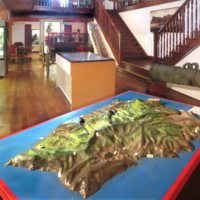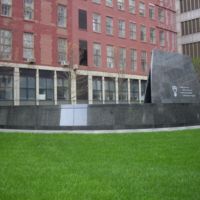
Museum of Saint Helena
The Museum of Saint Helena originated as a small natural history collection in 1854. Over the last 150 years it has moved three times before being officially opened in its current site in 2002 to mark the 500th anniversary of the island's discovery. It is housed in an eighteenth-century former power station in the island's capital, Jamestown. The museum explores the history of St Helena and it's position in the world. It has a large collection of physical artefacts supplemented by a digital archive of images, videos and audio.
The permanent exhibition offers a chronological view of Saint Helena's history, beginning with its geological development. The displays then explore the discovery of the island by European's, the role of the East India Company and migration. There is also a display about Napoleon Bonaparte's exile to Saint Helena.
Within the displays about colonisation and the East India Company are mentions of enslaved Africans brought to the island. Abolition and emancipation are also examined, as the interpretation moves on to explore the diverse make up of Saint Helena's population into the twentieth century. These displays are supported with artefacts and finds from recent archaeological digs on the island.

African Burial Ground National Monument
The memorial was founded after human remains were discovered underground by city workmen who were attempting to build some government offices in the 1990s. The remains belonged to enslaved Africans who were building New Amsterdam (present day New York). The African Burial Ground National Monument honours these Africans’ memory, having reburied them in a more respectful manner. It is the oldest and largest known excavated burial ground in North America for both free and enslaved Africans. A 'sacred space in Manhattan', the mission of the memorial is to acknowledge New York's involvement with slavery and the slave trade to provide a respectful and symbolic space for the reinternment of the African remains found at the site.
The facilities at the centre include a range of exhibits, a twenty-minute film and a book/gift shop. In addition, the memorial also offers on-site presentations in the visitor centre consisting of an hour long programme. The memorial is managed by the National Park Service and the U.S Department of the Interior.
The process of memorialization and the research conducted about the enslaved African skeletal remains was negotiated extensively between the General Services Administration, the African American descendant community, historians, archaeologists, and anthropologists. Civic engagement led to the ancestral remains reinternment within the original site of discovery. An external memorial, an interpretive centre, and research library were constructed to further commemorate the financial and physical contributions of enslaved Africans to colonial New York, and to honour their memory. The exhibits examine the history of the initial discovery, the research conducted to identify the remains, the documentation process and associated artefacts.